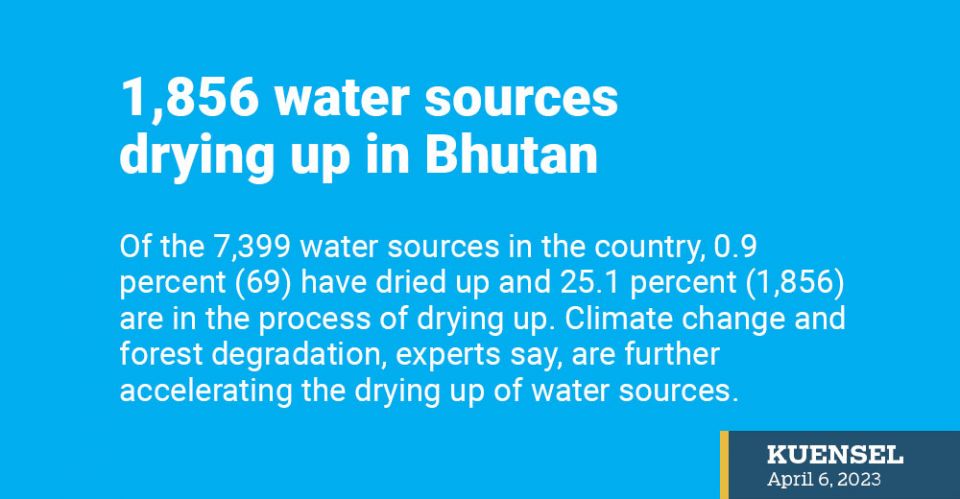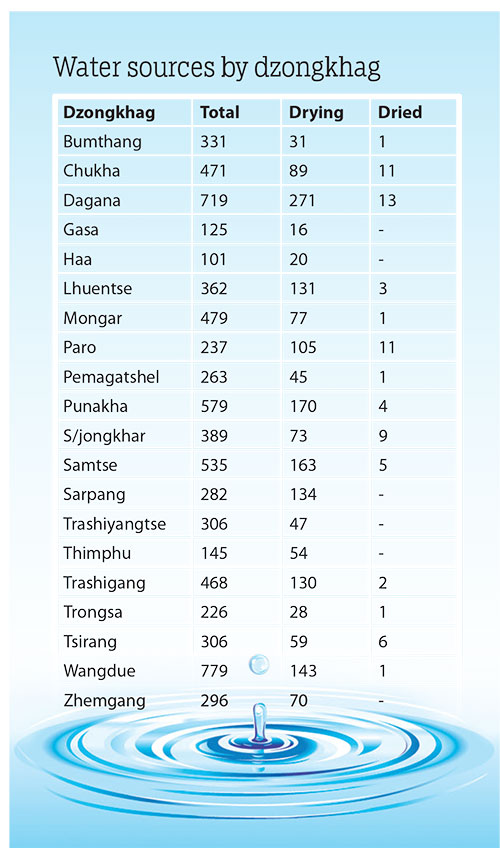
Of the 7,399 water sources in the country, 0.9 percent (69) have dried up and 25.1 percent (1,856) are in the process of drying up. Climate change and forest degradation, experts say, are further accelerating the drying up of water sources.
Thirteen water sources in Dagana have dried up and 271 are in the process of drying up. More than 30 percent of lakes, mostly used as a source of drinking water, are reported to have already dried up in the dzongkhag.
Reports of drinking and irrigation water shortages have been growing in recent years.
Chukha, Pemagatshel, Punakha, and Wangdue are some of the dzongkhag that are facing shortage of water due to drying sources.
A total of 149 sub-watersheds, from which the water sources are drawn, are already degraded.

About 530 sub-water sheds were identified by the Watershed Management Division’s (WMD) assessment across the country in the spring of 2021.
Road construction, forest fires, overgrazing, land use and land cover change, construction of transmission lines and other infrastructure development, and unstable geology, among others, are considered factors causing the drying up of water sources in the country.
In the Himalayas, where the increase in temperatures is higher than the world average, climate change is expected to impact water resources in a significant manner.
Experts say that most of the climate change impacts come down to the water. UN-Water recognises climate change as primarily a water crisis; its impacts are felt through worsening floods, rising sea levels, shrinking ice fields, wildfires, and droughts.
Among the 20 dzongkhags, Wangdue has the highest number of water sources (779), followed by Dagana (719). Haa has the least–101.
More than 76 percent of these water sources are used only for drinking with users ranging from one household to 4,850 households per water source. People use 11 percent of these water sources for irrigation and 7.8 percent for both drinking and irrigation.
Springs are the major sources of drinking water in the country—67.6 percent, followed by streams—25.7 percent, marshes—2.7 percent, ponds—2.3 percent, rivers—1.1 percent, and lakes—0.7 percent
The assessment also reported 269 potential water sources across the country.
Bhutan has one of the highest per capita availability of water in the world. Official figures show that Bhutan generates about 70,500 million m3 per of water annually, meaning each Bhutanese should ideally have access to about 94,500 m3 of water per person per year.












